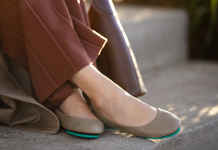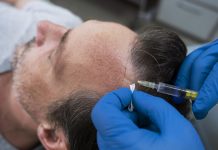Unwanted body hair is a problem for a lot of people, as it’s unsightly and can be uncomfortable. The desire to remove the hair usually starts in adolescence, and focuses on the face, armpits, legs, and bikini line – not just in women, but for men, too. Many of us want smooth, hairless skin, but the topic of excess body hair remains an embarrassing one.

There are many ways to remove unwanted hair, but few of them are 100% satisfactory. Their effects can be short-lived, and the treatments painful or expensive. Every individual should choose a method (or combination of methods) that works best for him or her. This depends not only on the area they wish to free from hair and their skin type, but also on how much time they have and how much they are willing to spend.
Do-it-yourself methods of hair removal
You can remove unwanted and unsightly excess hair yourself in the privacy of your own home by shaving, plucking, or waxing with a variety of DIY shaving kits, comprising razors, depilatory creams and tweezers. These treatments are cheap and simple but not always effective or long-lasting. They can also be quite painful!
Waxing is best done in a spa or salon, as incorrect treatment can cause unpleasant skin infections when the follicle is left open and vulnerable.
Laser hair removal
Laser hair removal is one of the most long lasting and painless techniques to remove hair, and one of the most common cosmetic procedures performed in the US. Pigment in the follicles absorbs the light, thus removing the hair. Laser treatment has the advantage of being extremely precise, able to target darker, coarse hair without damaging the surrounding skin. It’s also extremely quick: a small area such as the upper lip takes less than a minute to treat.
Laser hair removal is not recommended on black skin, as it increases the risk of hyperpigmentation (dark spots) and can cause scar tissue.
The topical prescription cream Vaniqa is now used in conjunction with laser hair removal, as well as other methods. It works by blocking the enzyme that stimulates hair growth and is most effective on facial hair.
Hair removal by electrolysis
Electrolysis employs a miniscule needle that is slid into the hair follicle to destroy those cells responsible for hair growth. Electrolysis is the only hair removal that’s actually permanent – the hair will not grow back again.
Sound too good to be true? Well, like all treatments, electrolysis is not without its drawbacks. It’s uncomfortable and time-consuming, as removal must be done hair-by-hair. Removing all unwanted hair on the face, for example, could take as many as 25 sessions, each lasting between five and ten minutes, with each treatment costing between 40 and 90 dollars. Electrolysis can also cause tiny scars where the needle was inserted and, like laser treatment, increases risk of scarring and dark spots in black skin.
Aftercare after hair removal
After laser treatment, clients are generally given ice packs, anti-inflammatory creams or lotions, as there can be some discomfort for a day or two afterward, when the treated skin will feel like it has been sunburned. In some people, blistering can occur.
Microdermabrasion
This is recommended after laser hair removal as it removes the outermost layer of dead skin cells. Microdermabrasion is like an instant facelift, whereby tiny rough grains are used to buff away the surface layer of skin, unclogging pores and rejuvenating aging and sun-damaged skin. It is a non-invasive, virtually painless procedure that can be performed on the face after laser hair removal to aid in the exfoliation of the purging hairs. The skin can be feel a little tender but not sore; it’s recommended that you do not apply make-up on the following day, so that your skin can rest.










